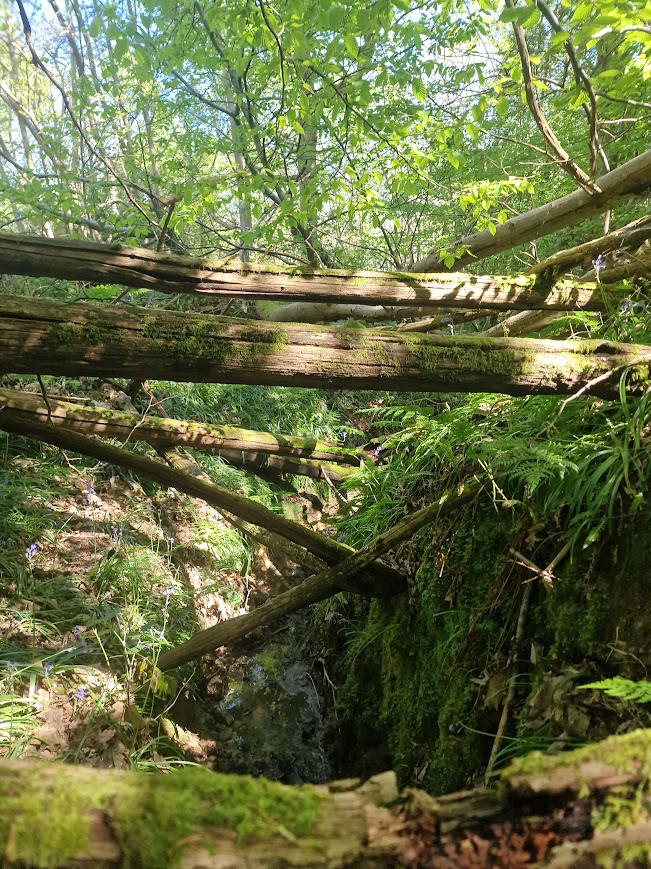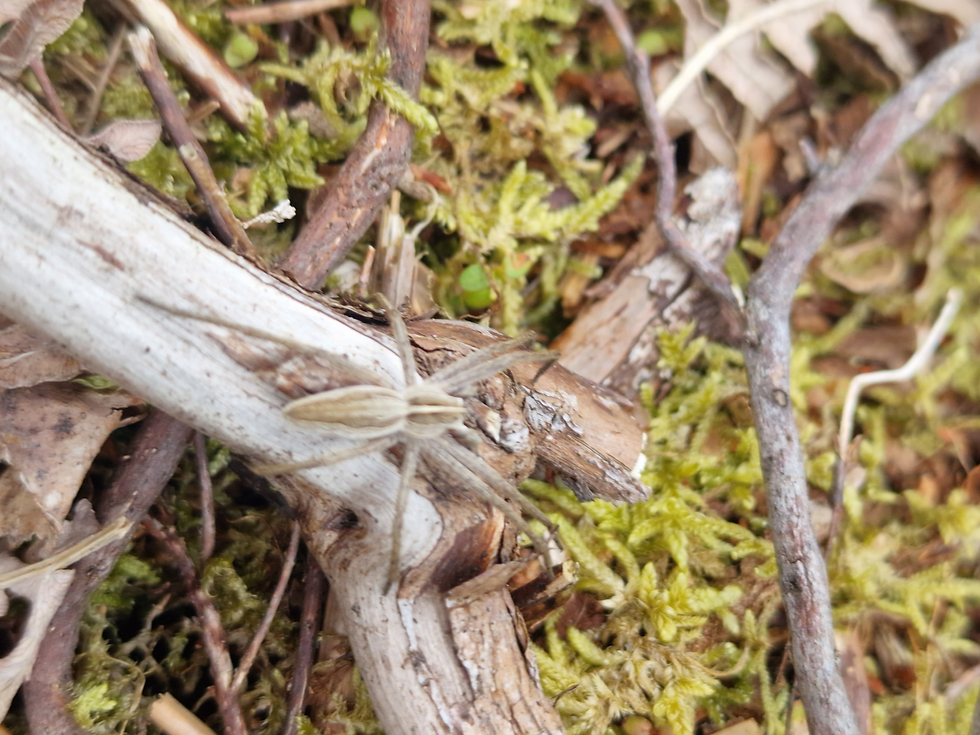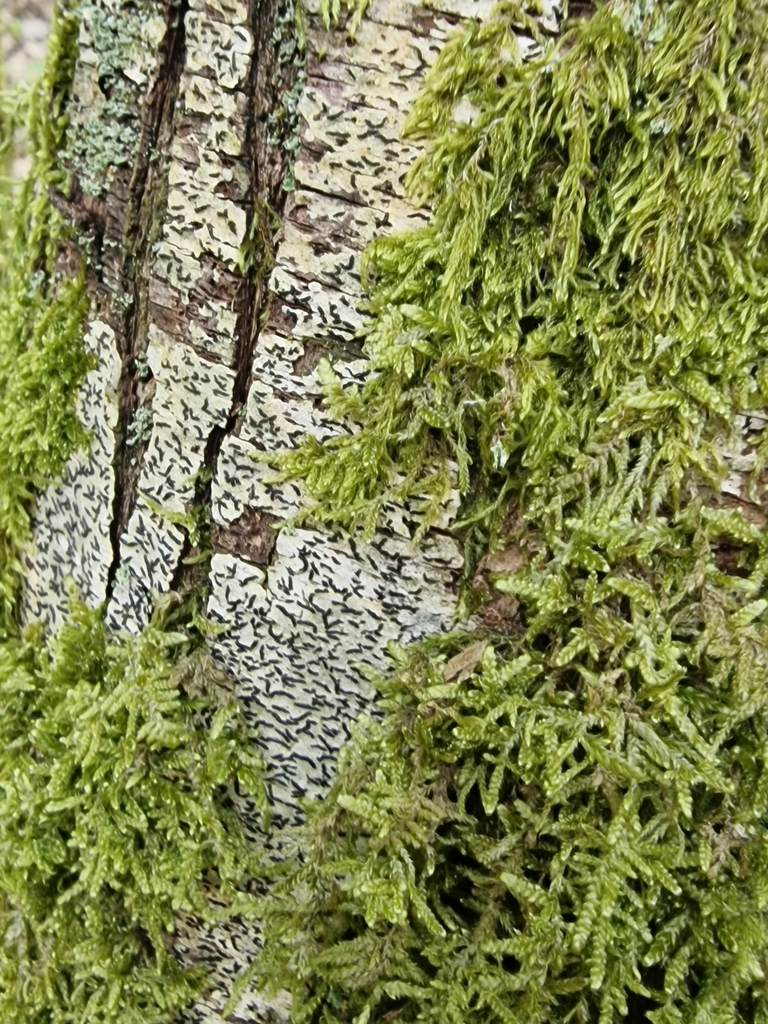Exploring the diversity of vascular plants, bryophytes, and lichens in Sussex Wildlife Trust's Selwyns Wood. 07.05.24
- Sim Elliott

- May 12, 2024
- 6 min read
Updated: Sep 25, 2024
Selwyns Wood is a small nature reserve south of Cross-in-Hand, near Heathfield, East Sussex. It can be reached by the 29A Brighton & Hove bus 29A - Heathfield - Brighton | Brighton & Hove Buses; an hourly service; journey time 90 minutes. Get off at the Cross In Hand, Fir Grove Road and walk down (south) Fir grove Road to the entry to Selwyn's Wood (ca. a 30 minute walk).
All italicized sections of text are quotations, with sources cited.
As an amateur naturalist, my identifications are provisional. Should you notice any errors, please feel free to inform me. For contact regarding any aspect of this blog, please email me at simeon[underscore]elliott[at]gmail[dot]com.
Please note, this post is not a systematic survey of the flora of this location; it is merely a collection of observations I made. I neither possess the knowledge required nor had the time to conduct a systematic survey
The photographs and text are in the chorological order of my walk.
Reserve Profile (Sussex Wildlife Tust):
Selwyns Wood is a small, mixed semi-natural woodland near the town of Heathfield, mainly Oak, Birch and Sweet Chestnut, with a few old big Beech trees. It is nestled in a south-facing valley with three streams running through it, one of which has developed into a typical Wealden ghyll stream. There is also a small open area dominated by heather, a characteristic feature of woodlands in this part of Sussex.
In spring, Bluebells and Wood Anemones can be seen carpeting the woodland floor, while wet areas along the stream have a distinctive flora with Cuckoo Flower, Wild Angelica and Marsh Thistle present. The ghyll stream itself supports a range of bryophytes, though no rarities are found in this particular stream.
While the majority of the Sweet Chestnut is not currently coppiced, the local volunteer group have opened up some of the paths and rides to provide structural diversity and nice sunny conditions with plenty of nectar sources for a range of invertebrates. Butterflies love these sheltered conditions and a good range can be seen utilising the paths, including Brimstone and Orange-tip in the spring and Silver-washed Fritillary and Speckled Wood later in the year. The woodland supports a good range of the common woodland birds, with breeding Willow Warbler, Chiffchaff, Nuthatch and Marsh Tit all singing to mark their territories during the spring.
The heather area is kept free of Bracken and Bramble which always want to take over, and the heather is cut in small patches to maintain a diversity of age ranges. Slow Worms can often be seen in this area. Also common is the day-flying moth, the Speckled Yellow whose foodplant, Wood Sage is found around this area.
In late summer look for numbers of Migrant Hawkers feeding around the edges of the open areas. The streams on site also make the reserve a good place to look for other dragonflies and damselflies. Reserve profile | Sussex Wildlife Trust
Into the woods
The path into the reserve had many Equisetum arvense Field Horsetail by its side
and Sorbus aucuparia Rowan; an ancient wood indicator species (Rose, 1999)
On the verge of the path there was much Ajuga reptans Bugle and Rabelera holostea, Greater Stitchwort both of which begin to come into flower in late April/early May.
There were many Bluebells, Hyacinthoides non-scripta Bluebell throughout the wood, bit most of the Wood Anemones, Anemonoides nemorosa, had gone over. Both species ancient wood indicator species (Rose, 1999) as they are very slow growers; but Wood Anemones are not just ancient woodland indicators but also indicators of undisturbed ancient land; as they grow abundantly on some of Sussex's ancient commons (heathland), e.g. Ditchling Common
As in many High Weald woods there was much Dryopteris filix-mas Male Fern
The Ghylls
Upon entering the wood there was a ghyll to the west which contained the mosses and ferns to be expected in a high weald ghyll; without any of the rare Atlantic species that are found in some High Weald ghylls. There are two ghylls running through the wood
Polytrichum formosum Bank Haircap Moss on the banks of the ghyll; and much of the woodland floor (clay)
The common Mnium hornum Horn Calcareous Moss festooned the banks of the ghyll
This his very common moss is surprisingly variable-looking, especially in spring, when bright green new growth at the shoot tips contrasts with the dark green older leaves below.
Plants are dioicous [having the male and female reproductive organs in separate individuals] male plants in breeding condition look like a different species. Such plants have very beautiful, flower-like inflorescences at the tips of their shoots. https://www.britishbryologicalsociety.org.uk/learning/species-finder/mnium-hornum/
On the banks on the ghylls the liverwort Common Pellia, Pellia epiphylla was dominant; here with some Bluebells gowning amongst it. The ferns on the ghyll streams were mostly Dryopteris dilatata Broad Buckler-Fern
There was also the moss Alleniella
complanata Flat Neckera
On a dead Oak log was the lichen Cladonia parasitica. On damp but hard, decorticated wood of branches, trunks, stumps and logs especially of Oak and less frequently on Pine in older woodland, more rarely on consolidated soil of earth banks in woodlands and heathlands Cladonia parasitica | The British Lichen Society
On a dead log nearby was porbably sterile Cladonia caespiticia. On mossy tree trunks, stumps and earth banks chiefly in sheltered situations, often in long-established, mature woodlands; widespread but rather local, easily overlooked and often sterile, when it cannot be identified with confidence. Cladonia caespiticia | The British Lichen Society
On the bark of a Sweet Chestnut ghyll was a script lichen (one of the genera Graphis, Graphina, Opegrapha or Phaeographis). This may be Phaegraphis smithii (chemistry is correct K+ yellow-orange) but spore analysis would be required to confirm this identification. Lichen identification entails seeing how some lichens react to chemical reagents: K is potassium hydroxide (10%) and for this lichen a drop if K should show a positive (+) result, turning the thallus yellow-orange)
Script lichen were common on the abundant Sweet Chestnut.
Graphis scripta
Arthonia atra
Also on the Chestnuts was Thelotrema lepadinum, Bark Barnacles lichen. Looking like little barnacles growing on tree trunks, barnacle lichen is found mainly on the bark of living trees in ancient woods, and it is indicative of longstanding woodland conditions. Barnacle Lichen (Thelotrema lepadinum) - Woodland Trust
The coppiced Sweet Chestnuts on which the above lichens grew.
The very common Metzgeria furcata Forked Veilwort was on many tress through the wood.
Fluffy dust lichens are very common in ghyll woods; this is probably Lepraria incana s. lat.
The wood had many vascular plant ancient woodland indicator species; including:
Allium ursinum Ramsons
Lonicera periclymenum Honeysuckle
Anemonoides nemorosa Wood Anemone
Rubus caesius European Dewberry
Lowland Heath with bog
The lowland heath had the species you'd expect: with abundant Common Heather Bracken, Tormentil Broom Moss; and around the bog element had abundant Sphagnums and Hard Fern; there were many Cladonia sp. lichens on the dry heath.
Calluna vulgaris Common Heather
Dicranum scoparium Broom Forkmoss
There was an Formica rufa agg. Rufa-group Wood Ants, nest
This Sweet Chestnut stump ...
was covered in Cladonia parasitica lichen, and the mosses Dicranum scoparium and Dicranella heteromalla
There was much of the cosmopolitan Luzula campestris Field Woodrush
and the acid specialist Potentilla erecta Tormentil
More ancient woodland indicator plants on the margin of the heathland and woodland:
Teucrium scorodonia Wood Sage
and
Rubus idaeus Raspberry
In the wet areas of the bogs there was much Soft Rush Juncus effusus
Struthiopteris spicant Hard Fern
and in the bogs:
Sphagnum subnitens Lustrous Bog-Moss; with capsules
Sphagnum subnitens Lustrous Bog-Moss
Gerris Pond Skaters probably G. lacustris Eurasian Common Pond Skater; in a bog pool
Bombus pascuorum Common Carder Bee nectaring on a Bluebell
Cladonia fimbriata Trumpet Lichen on rotting wood; growing on a dead log on the heath, with Dicranum scoparium Broom Fork-moss. Habitats: Often associated with mosses on recently disturbed sites, on rotten wood, in gardens and on old walls, occasionally in heathlands and dunes, absent from damp montane areas. Cladonia fimbriata | The British Lichen Society
Hypnum jutlandicum Heath Plait-Moss, growing on soil; Often abundant on the ground in acidic heathland Hypnum jutlandicum - British Bryological Society
Pisaura mirabilis European Nursery Web Spider
Woodland, mostly coppiced sweet chestnut
Allium ursinum Ramsons
Dryopteris dilatata Broad Buckler-Fern; very common in High Weald ghyll woods
Alnus glutinosa Common Alder
Veronica montana Wood Speedwell; an ancient woodland indicator species
Phlyctis argena Whitewash Lichen; on birch.
Parmotrema perlatum Black Stone Flower, on trunk of Pendunculate Oak
Graphis scripta Common Script Lichen with moss Hypnum curpressefore moss on trunk of Pendunculate Oak
Frullania dilatata Dilated Scalewort
Normandina pulchella Elf Ears Lichen - growing with the Frullania dilatata; Normandina pulchella frequently grows intermingled with bryophytes.
Polytrichum formosum Bank Haircap Moss
with capsules
showing male inflorescences
Mosses and Cladonia lichens on the stool of an old coppiced Sweet Chestnut.
This lichen-bryophyte community I have noted on quite on many Sweet Chestnut stools in High Weald woods
Leucobryum glaucum Pincushion Moss
Dicranum scoparium Broom Forkmoss
Cladonia coniocraea Common Powderhorn
Cladonia caespiticia Stubby-stalked Cladonia
Probably Arthonia spadicea
Ribes rubrum Red Currant; and ancient woodland indicator species
And finally, an optimistic sighting
A young Fraxinus excelsior Ash#
In the long term we predict that ash in the UK will gradually evolve greater resistance to ash dieback because of natural selection, Rising from the ashes | John Innes Centre (jic.ac.uk)































































Comments